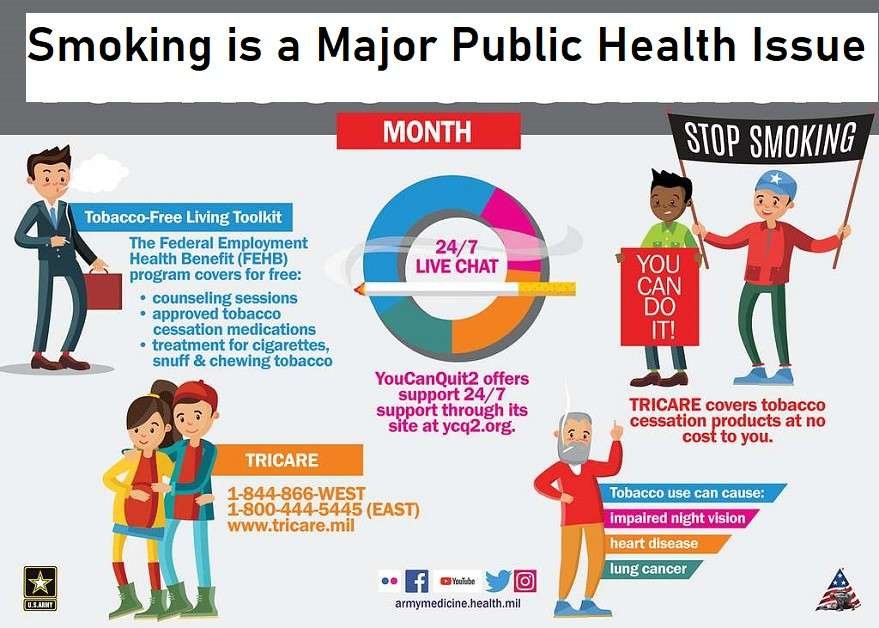Smoking as a Public Health Concern, Smoking has become one of the leading public health issues worldwide. Despite knowledge of the harmful effects, cigarette smoking remains a prevalent habit among adults and adolescents. According to the World Health Organization (WHO), tobacco use is responsible for nearly seven million deaths annually, making it one of the most significant contributors to premature mortality worldwide.
The negative impact of smoking on individual well-being and society at large is undeniable. Smoking increases the risk of chronic diseases such as cancer, heart disease, respiratory illnesses, and stroke. The economic burden associated with smoking is also staggering; it significantly drains national healthcare systems and reduces productivity due to increased absenteeism.
Prevalence of Smoking
Smoking is a major public health issue that continues to affect millions of people worldwide. Despite the numerous warnings and campaigns aimed at reducing smoking habits, the number of smokers remains high. Smoking has been linked to various health issues, including cancer, heart disease, stroke, and respiratory diseases such as emphysema. The World Health Organization (WHO) estimates that tobacco use causes more than 7 million deaths every year globally. In this article, we will explore the impact of smoking on public health and highlight some effective measures that can be taken to curb this global epidemic.
Smoking is a global epidemic that continues to affect millions of people worldwide. It is considered one of the leading causes of preventable deaths, with approximately 6 million people losing their lives each year due to smoking-related illnesses. Despite numerous efforts by governments and public health organizations to curb its prevalence, smoking remains a significant public health issue.
Research has shown that smoking can cause various health problems, including lung cancer, heart disease, stroke, and respiratory diseases such as chronic bronchitis and emphysema. Furthermore, secondhand smoke exposure can also lead to adverse health effects in nonsmokers. The economic burden of tobacco use on healthcare systems around the world is substantial, costing billions of dollars annually in medical expenses and lost productivity.
Health Consequences of Smoking
Smoking is one of the most significant public health issues worldwide, contributing to millions of deaths every year. The World Health Organization (WHO) estimates that tobacco use kills around 8 million people annually and causes numerous diseases, including lung cancer, respiratory illness, heart disease, stroke, and diabetes. Despite widespread awareness of the health risks associated with smoking and ongoing efforts to reduce tobacco consumption rates globally, smoking remains a leading cause of preventable death and disease worldwide. In this article, we will explore the impact of smoking on public health and examine initiatives aimed at reducing tobacco use in different parts of the world.
Economic Impact of Smoking
Smoking has been a major public health issue worldwide for several decades. Despite the well-known risks associated with smoking, millions of people continue to light up every day.
The World Health Organization (WHO) estimates that tobacco use kills around 8 million people each year. That’s more than the number of deaths caused by HIV/AIDS, malaria, and tuberculosis combined. In addition to the human toll, smoking also has a significant economic impact on society in terms of healthcare costs and lost productivity.
Policies and Programs to Address Smoking
Smoking is a worldwide epidemic that has become a major public health issue. It is a leading cause of preventable deaths, claiming millions of lives annually. Despite the known risks associated with smoking, many individuals continue to engage in this harmful behavior, often leading to devastating consequences for themselves and those around them.
The effects of smoking are far-reaching and impact not only individuals but entire communities and nations. From increased healthcare costs to decreased productivity, the economic burden of smoking is immense. Furthermore, secondhand smoke exposure also poses significant health risks to non-smokers who are exposed to it regularly.
In this article, we will explore the various impacts of smoking on public health and delve into the reasons why it remains such a prevalent issue worldwide.
Global Efforts to Combat Smoking
Smoking is the most significant public health concern worldwide. It is a leading cause of preventable deaths and a major contributor to chronic diseases such as cancer, heart disease, and respiratory illness. Despite the well-known risks associated with smoking, millions of people continue to smoke globally, especially in developing countries where tobacco companies aggressively market their products.
The impact of smoking extends beyond individual health outcomes as it also results in increased healthcare costs and decreased productivity due to lost workdays and disability. The World Health Organization (WHO) estimates that tobacco use kills more than 7 million people every year and costs the global economy more than $1 trillion annually in healthcare expenditures and lost productivity.
Smoking as a global public health concern
Smoking is a major public health issue worldwide and continues to be one of the leading causes of preventable death. It is estimated that tobacco use kills more than 8 million people each year, with over seven million deaths attributed to direct smoking and another 1.2 million due to secondhand smoke exposure. Despite numerous efforts aimed at reducing smoking rates, it remains a significant problem in many parts of the world.
The harmful effects of smoking are well documented, ranging from lung cancer and heart disease to stroke and respiratory illnesses such as chronic obstructive pulmonary disease (COPD). Not only does it affect an individual’s health, but also has far-reaching consequences for their family and society as a whole through increased healthcare costs and lost productivity.
The impact of smoking on health:
Smoking is a global epidemic that has claimed countless lives and caused immeasurable suffering. It is one of the leading causes of preventable death worldwide, contributing to over 8 million deaths per year. Despite efforts to curb smoking rates through awareness campaigns and regulations, it remains a major public health issue that affects individuals, families, communities, and entire countries.
The health consequences of smoking are well-documented and extend far beyond lung cancer. Smoking increases the risk of heart disease, stroke, respiratory illnesses like chronic obstructive pulmonary disease (COPD), and numerous other cancers such as bladder, liver, pancreatic and stomach cancer. Additionally, secondhand smoke exposure can cause serious health problems for non-smokers who inhale it.
Initiatives to Reduce Smoking Rates
Numerous initiatives aim to reduce smoking rates and create smoke-free societies. These initiatives include mass media campaigns to raise awareness, school-based programs to educate youth about the dangers of smoking, community interventions to promote smoke-free environments, and support services for smokers seeking to quit. By combining these efforts, it is possible to create a supportive environment that encourages individuals to quit smoking and prevents young people from initiating this harmful habit.
The Role of Education
Education plays a crucial role in preventing smoking initiation and promoting smoking cessation. Comprehensive and age-appropriate tobacco education should be integrated into school curricula. It should cover the health risks of smoking, the manipulation tactics used by tobacco companies, and the importance of maintaining a smoke-free lifestyle. By empowering individuals with knowledge and critical thinking skills, education can serve as a powerful tool in reducing smoking rates.
Support for Smokers
Providing support for smokers who want to quit is essential in achieving successful smoking cessation outcomes. Healthcare professionals should offer counseling services, personalized quit plans, and access to nicotine replacement therapy or other pharmacological treatments. Peer support groups, helplines, and online resources can also play a significant role in assisting individuals throughout their quitting journey. By fostering a supportive and non-judgmental environment, we can empower smokers to overcome their addiction and improve their overall health.
Future Perspectives
The fight against smoking as a public health issue continues to evolve. New challenges, such as emerging tobacco products and novel nicotine delivery systems, require ongoing research, policy adaptations, and public health interventions. Efforts should focus not only on reducing smoking rates but also on preventing the uptake of smoking among young people. By addressing the underlying factors contributing to smoking initiation, we can create a healthier future for generations to come.
Conclusion: The Need for Continued Action
Smoking is a major public health issue worldwide with devastating consequences for both smokers and non-smokers alike. Vabar Joyh Disposable 5000 Puffs IN UAE According to the World Health Organization (WHO), tobacco use kills more than 8 million people each year, making it the leading cause of preventable death globally. Despite widespread knowledge of its harmful effects, smoking remains a prevalent habit among many populations.
The negative impact of smoking on human health cannot be overstated. It increases the risk of developing various illnesses such as lung cancer, heart disease, stroke, respiratory diseases, and diabetes. Furthermore, second-hand smoke also poses a significant threat to non-smokers who may inhale toxic chemicals through passive exposure.


